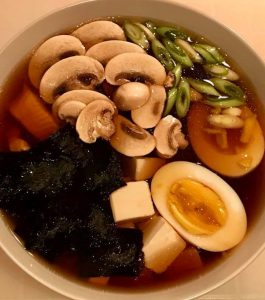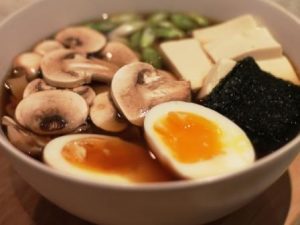
The Japanese cuisine consist of many healthy fast food.
In Europe there are several different types of fast foods that are not so healthy such as pizza and shawarma. These dishes are often are eaten on a busy day.
In Japan, there are several types of fast food that are suits a busy workday, dishes that can be eaten in a short time. These dishes are perfect for days with a lot of work. In Japan, a buzy work day is on average of 10-15 hours.
The Japanese are the population in the world that eats most noodles. The noodle soups are made in many different ways, some soups are made with fish, pork or chicken stock. In the big cities such as Tokyo each noodle bar has their very own recipse. In Japan, each region has their unique ingredients and raw materials, which are used to make tasty noodle soup.
In Japan, noodle soups are eaten all year round. Yes, even on a hot summer days. In Europe, noodle soups are most often eaten in the autumn, winter and spring.
On the noodle soup course for beginners, you will learn step by step how to make 2 very different unique and tasty Japanese noodle soups.
Read more about Noodle Soup course for beginners
_
Zoë has lectured and held sushi courses for A. P. Moller – Maersk, Hugo Boss Nordic, Novo Nordisk, Novartis, Velux, Gorrissen Federspiel, Beierholm revision, Elbek & Vejrup and many more.


